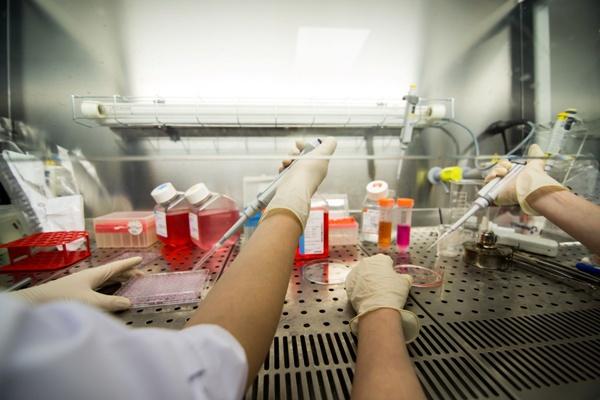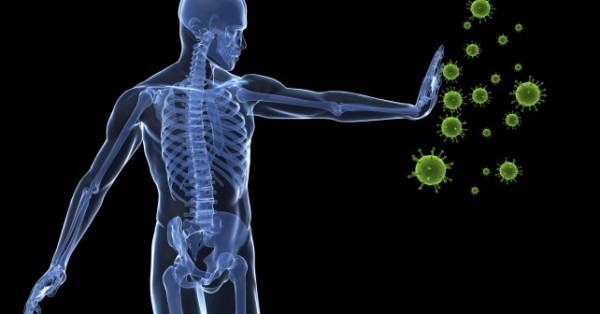
- Genomnye
Genomic center. Photo: press service of MIPT
Scientists from the Moscow Institute of physics and technology, Institute of molecular biology RAS, Institute of Bioorganic chemistry Russian Academy of Sciences and other scientific organizations have developed a new approach to diagnosis of bowel cancer, reports the press service of MIPT. The study is published in the journal Cancer Medicine.
Researchers have developed a biochip based on hydrogel, which allows you to diagnose colon cancer — colorectal cancer (CRC). This cancer ranks third in frequency among all malignancies, and in the early stages of the disease with minimal symptoms. Five-year survival of patients with CRC, despite the best efforts of doctors, still does not exceed 36% to achieve good therapeutic effect and recovery of the patient is possible only with early diagnosis.
Proposed by scientists from IMB RAS, MIPT, rich, First MSMU named after I. M. Sechenov, Institute of Bioorganic chemistry and city clinical hospital named after V. M. Buyanova method is based on simultaneous detection in the blood of patients from many different substances. The autoantibodies against oncoassociated glycans (detected in serum at early stages of cancer, immunoglobulins of different classes, as well as tumor markers, molecules produced by cells of the tumor.
Tumor markers — substances that are actively used for cancer diagnosis. However, currently used for the diagnosis of CRC combination (carcinoembryonic antigen + carbohydrate antigen CA 19-9) provides a not too high sensitivity, allowing to detect only half of the cases. To increase the sensitivity of diagnosis, the researchers turned to glycobiology — a rapidly growing scientific discipline of glycans, biological molecules. In the life of the body they not only play the role of nutrients or “building blocks” for cells, but also important for establishing contacts between cells, proper growth of organs. In the context of the study the presence of cancer cells particular glycans allows to distinguish them from healthy cells.
To identify glycans same oncoassociated help autoantibodies — molecules that the immune system produces to high-precision fight a specific enemy, and they are finely “tuned” to interact with a given target. For example, antibodies against the influenza virus interact only with the protein included in the composition of viral particles a particular strain, and autoantibodies against glycan oncoassociated strictly interact with glycans that exist only in cancer cells the CRE.
Antibodies allow you to mark the target and put in place mechanisms that ensure its destruction. Moreover, the target can be cells of the organism: if they degenerated into a cancerous or infected by a virus.
The unique ability of antibodies to selective detection of other molecules formed the basis of many methods of laboratory diagnosis, and is widely used in scientific experiments.
The researchers proposed to look for autoantibodies to oncoassociated the glycans in serum. This method has previously shown promise in the diagnosis of ovarian cancer (on this subject published in 2012, the work of Swiss scientists), when as the main diagnostic tools were chosen biological microchips.
The idea of microchips in the 1980-ies suggested Andrei Mirzabekov, who led the Institute of molecular biology and Department of molecular Biophysics at MIPT. today this idea is called the technical basis of the biology of the XXI century.
In most cases, a microchip is a flat plate coated with samples of certain biological molecules, and in the new article we are talking about development in eimb RAS) three-dimensional biochip based on hydrogel. This volume of the cell from a special gel, inside which are the proper reagents and molecular probes.
The structure of the gel provides an optimal environment for analysis, and researchers have successfully solved many challenges on the path to accurate diagnosis. For example, they were able to achieve a uniform distribution of molecular probes and to provide sensitivity superior to conventional “flat” system.
Researchers have created a prototype test system that allows to measure simultaneously the concentration of tumor markers of protein nature, autoantibodies to glycans, as well as of immunoglobulins G, A and M in human blood. Given that the majority of protein markers are not specific in relation to the localization and type of tumor, scientists have grouped them together — the so-called diagnostic and prognostic signatures (combinations of protein-specific markers and antibodies to glycans).
With the use of the prototype test system the researchers analyzed blood serum of 33 patients with CRC, 69 healthy donors and 27 patients with inflammatory bowel disease. Diseases such as Crohn’s disease or diverticulitis, can in the long run, lead to the CRE, but in the diagnosis of the disease should not be confused.
This approach allowed us to transcend contemporary methods — based on the diagnostic signature was able to correctly predict a diagnosis of CRC in 95% of cases, against 79%, determined by the traditional method.
The sensitivity of detection of CRC in patients with II-IV stage was 87% vs 21%. The same method specificity was 97%.
“Developed in eimb RAS) is an extremely promising method to aid in the diagnosis of diseases of the gastrointestinal tract, and, hopefully, soon be established on the basis of this method, the test system appears in the clinical laboratories of our country,” said, one of the authors of the developed approach, associate Professor of MIPT, candidate of physico-mathematical Sciences Jeanne the city.








